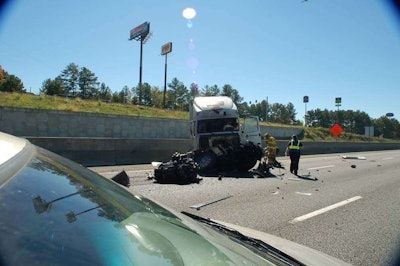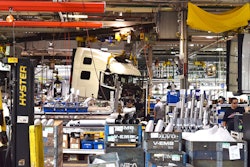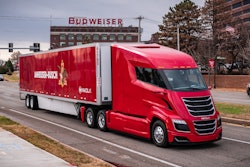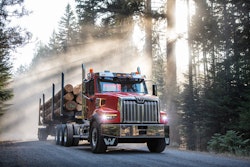
Plaintiff attorneys put a lot of effort into painting truckers in a negative – if not outright violent – light, but among the defense tools carriers have at their disposal is their own reputation and how their companies are perceived.
One of the things a carrier can do to sculpt its public perception is refine its web footprint, because the Internet will be the first place litigators and potential jurors look post-crash.
“Companies really need to be dialed in on what their social media Internet presence is,” said Steve Setliff, managing partner of Setliff Law, “because it’s been my experience in trying these cases and in dealing with jurors afterwards that the judges admonition to not check any outside sources goes out the window.”

Fleet executives face unique challenges in their roles every day, especially in 2020.
During the seven sessions of CCJ Virtual Solutions taking place October 19-22, you’ll get answers to your toughest fleet management problems from the top leaders and business minds in the trucking industry. Registration is free and sessions include:
- Biden vs. Trump: What the Next President Could Mean for Trucking
- Costly Jury Verdicts Driving Up Insurance Rates
- Heavy Hitter Insights on Freight Flows
- Electric vs. Hydrogen: Trucking’s Next Big Thing?
- Putting Driver Safety Data to Work
- Unplanned Maintenance’s Impact on Total Cost of Ownership
- Raising the Bar: How to Discover and Draw Top Talent
Among the many topics of discussion will be how critical a fleet’s public perception can be at trial, regardless of how accurate it may or may not be. That a fleet’s reputation is often cultivated first via Google search, Setliff suggested taking a proactive approach to controlling the results.
“Enter every single safety contest you can enter. Even if you finish Miss Congeniality, put it up on your website,” he said. “Put a plaque up on your wall.”
A carriers’ involvement in their local communities – like donations to the American Heart Association, for example, or the local little league – should also be promoted “and put that on your website,” he said, “so that people can see that you’re a good community citizen. It’s just a good way to behave in an affirmative manner that projects a good image of us that jurors will see.”
Much of website work is contracted out to companies with a lot of web design or marketing expertise, but these firms aren’t as sensitive to the insurance ramifications of a carrier’s public image and have no trucking experience.
Nischan said it’s important for carriers to review their online presence with a more critical than artistic eye.
“At least once a year I will look at a website and I see a picture of a truck that is portrayed to be moving relatively fast in the spirit of its company’s name,” he said, “and I’ll see an image of the truck crossing a double yellow line.”
Nischan said he advises clients to replace it and any content that sends a message that “we’ll get it there under an any circumstances type scenario.”
He advised being mindful of the company’s mission statement and – in agreement with Setliff – promoting publicly any involvement in local initiatives, adding that any content “that shows your truck, it should show them in a positive light.”
A driver’s social media can play a role in a carrier’s overall look, and it can also be hauled into court.
Setliff said he likes to participate in fleets’ drivers meetings, explaining to drivers the process that follows an accident and what the expectation will be of them on the scene.
Setliff recalled cases of a driver who posted pictures to his social media page from a NASCAR race with the driver passed out over the hood of his truck “surrounded by Coors Light cans,” and clients who posted trucking memes “that portray the ‘you cut off a tractor trailer, you’re asking for an 80,000 pound suppository.”
“If they put that up, what they’re really doing is subjecting themselves to potential personal civil or criminal liability,” he said, “because some of those things can go toward state of mind and there are some cases where we disavow the actions of our drivers, so it’s just a dumb thing to do.”
Setliff said it’s important that carriers educate drivers on how their personal social media is used in the context of truck crash litigation.
“I’ve gotten to the point in my life that if it’s not pictures of puppies or flowers, I just don’t put it up any more because to do so is running a very substantial chance you’re going to offend somebody,” he said, “and that somebody just might be the foreman of your jury.”
Post-crash, Nischan added that any pictures taken by a driver, or any type of conversations or discussions of any sort, should never be posted publicly.
“I’ve seen, unfortunately, too many drivers post a picture they thought was relatively harmless of an incident they were involved in,” he said. “It was captured and it was used against the motor carrier later during legal proceedings.”
“Less is better. Zero,” he added, “preferably is better. Don’t talk about it. Don’t share about it. All that public perception, the more you post, the more is used against you.”
Fielkow notes a good post crash protocol is a fairly streamlined process: Step 1: Call 911. Step 2: Ensure to the extent possible the accident doesn’t cause additional accidents until police arrive and keep the scene safe.
“The most important thing is health,” he said. “Be sure we’re calling 911 right away regardless of fault.”
Once things on the scene have settled down, Fielkow said JetCo drivers are asked to take pictures and the back office will review inward and outward facing cameras footage as part of its own review process.
“Drivers are the first, best and only investigator on behalf of the company that we’re ever going to have at the scene,” Setliff said, “because by the time we can get accident recon or an adjuster out there, the trucks are going to be moved.”













